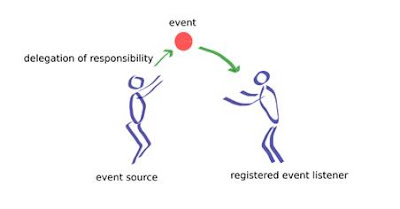Stack and Queue Introduction
Stack
A stack is a basic data structure that can
be logically thought as linear structure represented by a real physical stack
or pile, a structure where insertion and deletion of items takes place at one
end called top of the stack. The basic concept can be illustrated by thinking
of your data set as a stack of plates or books where you can only take the top
item off the stack in order to remove things from it. This structure is used
all throughout programming.
The basic implementation of a stack is also called a LIFO (Last In First
Out) to demonstrate the way it accesses data, since as we will see there are
various variations of stack implementations.
There are many real life examples of stack.
Consider the simple example of plates stacked over one another in canteen. The
plate which is at the top is the first one to be removed, i.e. the plate which
has been placed at the bottommost position remains in the stack for the longest
period of time. So, it can be simply seen to follow LIFO/FILO order.
There are basically three operations that
can be performed on stacks. They are 1) inserting an item into a stack (push).
2) deleting an item from the stack (pop). 3) displaying the contents of the
stack (peep).
Below
are some of operations a stack data type normally supports:
Stack<item-type> Operations
push(new-item:item-type)
Adds an item onto the stack.
top():item-type
Returns the last item pushed onto the stack.
pop()
Removes the most-recently-pushed item from the stack.
is-empty():Boolean
True if no more items can be popped and there is no top
item.
is-full():Boolean
True if no more items can be pushed.
get-size():Integer
Returns the number of elements on the stack.
Applications of Stacks
- Converting a decimal number into a binary number
- Expression evaluation and syntax parsing
- Quicksort
- An algorithm that has Linear Time Complexity
- Balancing of symbols
- Infix to Postfix /Prefix conversion
- Redo-undo features at many places like editors, photoshop.
- Forward and backward feature in web browsers
- Used in many algorithms like Tower of Hanoi, tree traversals, stock span problem, histogram problem.
- Other applications can be Backtracking, Knight tour problem, rat in a maze, N queen problem and Sudoku solver
Queue
A queue is a linear list of elements in which deletion of
an element can take place only at one end called the front and insertion can
take place on the other end which is termed as rear. The term front and rear
are used frequently while describing queues in a linked list. In this chapter
you will deal with queue as arrays.
In the concept of queue, the first element to be inserted in the queue
will be the first element to be deleted or removed from the list. So Queue is
said to follow the FIFO (First In First Out) or FCFS (First Come First Serve) structure. A real life scenario in
the form of example for queue will be the queue of people waiting to accomplish
a particular task where the first person in the queue is the first person to be
served first.
A queue is also called a FIFO (First In First Out) to demonstrate the way
it accesses data.
Types of Queue
- Simple Queue
- Circular Queue
- Dequeue
Queue<item-type> Operations
enqueue(new-item:item-type)
Adds an item onto the end of the queue.
front():item-type
Returns the item at the front of the queue.
dequeue()
Removes the item from the front of the queue.
is-empty():Boolean
True if no more items can be dequeued and there is no front
item.
is-full():Boolean
True if no more items can be enqueued.
get-size():Integer
Returns the number of elements in the queue.
Circular Queue
Circular
Queue is a linear data structure in which the operations are performed based on
FIFO (First In First Out) principle and the last position is connected back to
the first position to make a circle. It is also called ‘Ring Buffer’.
Applications of Queue
Queue is used when things don’t have to be processed immediately, but have to be processed in First In First Out order like Breadth First Search. This property of Queue makes it also useful in following kind of scenarios.
1)
When a resource is shared among multiple consumers.
Examples include CPU scheduling, Disk Scheduling.
2) When
data is transferred asynchronously (data not necessarily received at same rate
as sent) between two processes. Examples include IO Buffers, pipes, file IO,
etc.
Applications of Circular Queue
1) Memory
Management: The unused memory locations in the case of ordinary queues can
be utilized in circular queues.
2) Traffic
system: In computer controlled traffic system, circular queues are used to
switch on the traffic lights one by one repeatedly as per the time set.
3) CPU
Scheduling: Operating systems often maintain a queue of processes that are
ready to execute or that are waiting for a particular event to occur.






Comments
Post a Comment